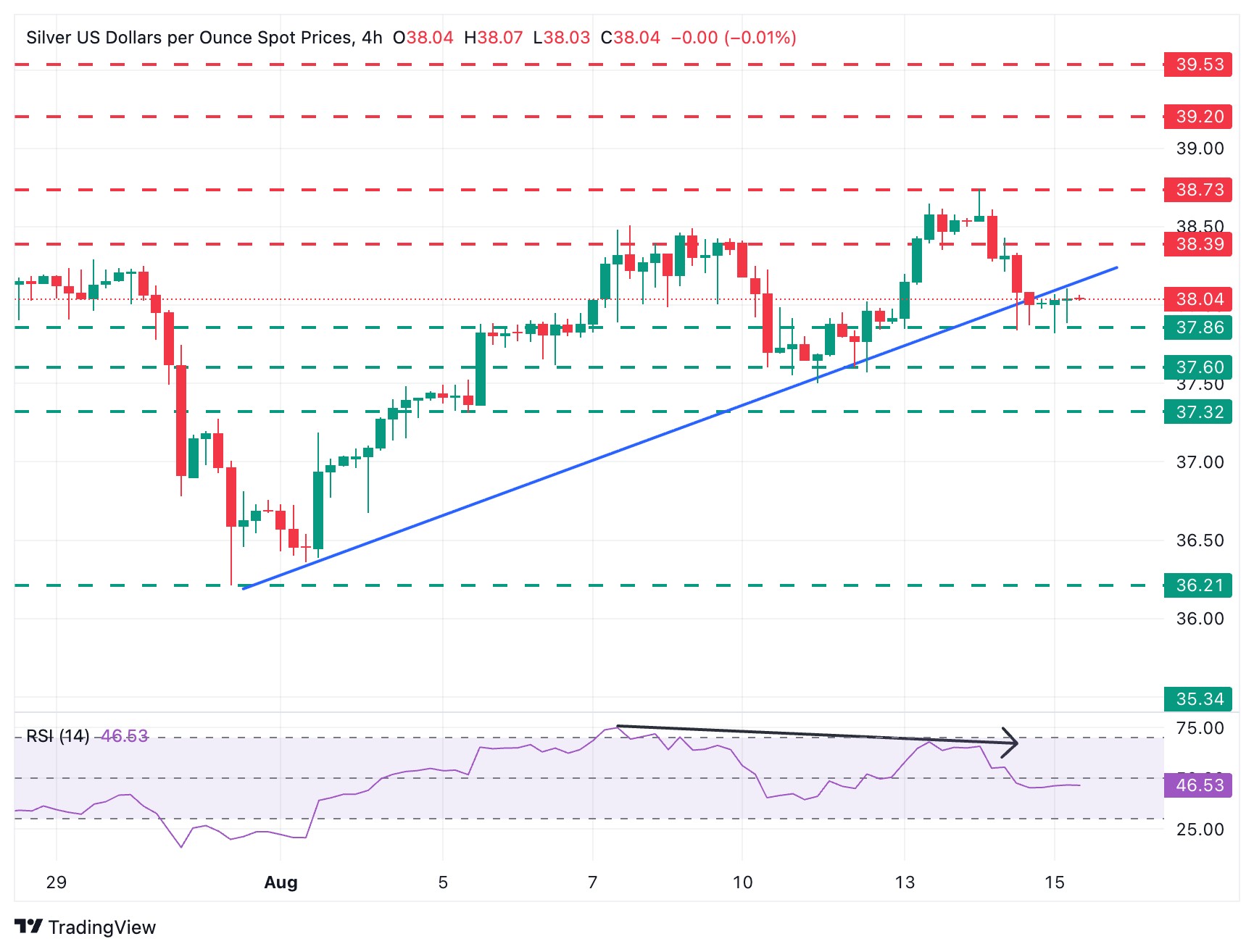Silver Price Forecast: XAG/USD hesitates at $38.00 amid growing bearish momentum
- Silver languishes around $38.00 after rejection at $38.75 on Thursday.
- US Dollar's rally following strong PPI figures increased bearish pressure on precious metals.
- XAG/USD has broken trendline resistance from late-July lows.
Silver (XAG/USD) remains vulnerable, following a sharp reversal from $38.75 on the previous day. Precious metals slid on Thursday after the release of strong US PPI figures, and Silver is struggling to return above the $38.00 level on Friday.
US producer prices showed their fastest growth in three years in July, beating market expectations and confirming that Trump’s tariffs are starting to boost inflationary pressures, which calmed investors’ hopes of Fed cuts and sent the US Dollar rallying across the board.
Technical analysis: XAG/USD has broken trendline support

From a technical perspective, an impulsive reversal from the $38.75, which has pushed price action below the ascending trendline support, and the bearish divergence in the 4-Hour RSI suggest that a deeper correction is on the cards.
The pair is clinging above Thursday’s lows, at $3785 so far, with the next bearish target at the August 12 low, at $37,60, ahead of the August 5 low, at $37.30.
To the upside, the reverse trendline, now at $38.10, is keeping bears in control. A bullish reaction above here would ease negative pressure and shift the focus towards the resistance area around $38.40 (intra-day level) ahead of Thursday’s high, at the mentioned $38.75 level.
Silver FAQs
Silver is a precious metal highly traded among investors. It has been historically used as a store of value and a medium of exchange. Although less popular than Gold, traders may turn to Silver to diversify their investment portfolio, for its intrinsic value or as a potential hedge during high-inflation periods. Investors can buy physical Silver, in coins or in bars, or trade it through vehicles such as Exchange Traded Funds, which track its price on international markets.
Silver prices can move due to a wide range of factors. Geopolitical instability or fears of a deep recession can make Silver price escalate due to its safe-haven status, although to a lesser extent than Gold's. As a yieldless asset, Silver tends to rise with lower interest rates. Its moves also depend on how the US Dollar (USD) behaves as the asset is priced in dollars (XAG/USD). A strong Dollar tends to keep the price of Silver at bay, whereas a weaker Dollar is likely to propel prices up. Other factors such as investment demand, mining supply – Silver is much more abundant than Gold – and recycling rates can also affect prices.
Silver is widely used in industry, particularly in sectors such as electronics or solar energy, as it has one of the highest electric conductivity of all metals – more than Copper and Gold. A surge in demand can increase prices, while a decline tends to lower them. Dynamics in the US, Chinese and Indian economies can also contribute to price swings: for the US and particularly China, their big industrial sectors use Silver in various processes; in India, consumers’ demand for the precious metal for jewellery also plays a key role in setting prices.
Silver prices tend to follow Gold's moves. When Gold prices rise, Silver typically follows suit, as their status as safe-haven assets is similar. The Gold/Silver ratio, which shows the number of ounces of Silver needed to equal the value of one ounce of Gold, may help to determine the relative valuation between both metals. Some investors may consider a high ratio as an indicator that Silver is undervalued, or Gold is overvalued. On the contrary, a low ratio might suggest that Gold is undervalued relative to Silver.






